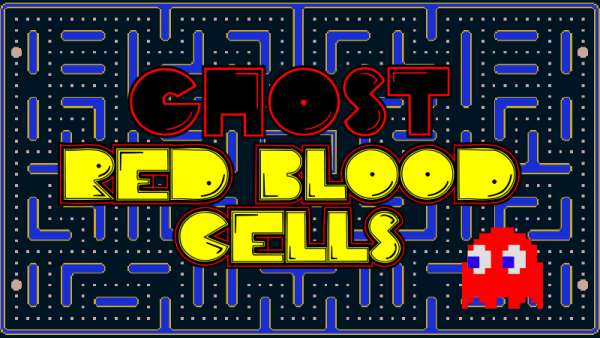Ghost Red Blood Cells are used in biomedical research as a natural drug delivery system for the targeted treatment of intravascular and extravascular diseases with few side effects. The therapeutic spectrum is broad and Ghost Red Blood Cells offer new possibilities for answering many fundamental biological questions.
What Are Ghost Red Blood Cells?
Ghost Cells are classically enlarged eosinophilic epithelial cells that no longer possess a nucleus but have cytoplasm and an intact cell membrane. Ghost Cells result from coagulative necrosis in which cell architecture is preserved but cell death still occurs. They are commonly found at lesions in or around tumors but are also found as Ghost Blood Cells in whole blood stains. Red blood cells do not naturally possess a nucleus. However, they become Ghost Red Blood Cells when there is a loss of red blood pigment and the cell membrane remains largely intact. On microscopic examination of blood smear, Ghost Red Blood Cells can be seen as transparent cells that are otherwise morphologically indistinguishable from normal red blood cells.1
Ghost Red Blood Cells as a Vascular Drug Delivery System
Vascular delivery of a wide variety of drugs/medicines continues to be a major biomedical challenge. Therapeutic agents should have a long half-life for optimal efficacy, find their target structure specifically and produce as few side effects as possible. For this purpose, so-called drug delivery systems (DDS) are used. Vascular DDS are divided into three types:
- Artificial DDS (e.g., nanocarriers made of synthetic components)
- Natural DDS (cells or cell fragments)
- Hybrids (combinations of artificial and natural components)
Red Blood Cells (RBCs) have been described as natural DDS since 1970 and have already been explored in various studies and animal models as well as in humans. In this context, the RBCs are used as Ghost Red Blood Cells. The cells are chemically deprived of their hemoglobin, but the cell membrane remains intact. Red blood cells do not naturally possess cell organelles or a nucleus, so a Ghost Cell remains after the hemoglobin is removed. The entire volume of the Ghost RBC can now be used to transport drugs or even biochemical probes. As an alternative to encapsulating substances in the Ghost RBC, they can also be coupled to the membrane of the cell for transport.1,2
Advantages of Ghost Red Blood Cells
Erythrocytes are natural "suppliers" that bind oxygen and transport it throughout the body. This allows them to use natural mechanisms in the target organism for transport, localization and degradation. They occur in high numbers (approximately 5 million RBCs per microliter of adult blood) and are easy and inexpensive to isolate. It is possible to work with donor cells as well as with cells taken from the patient himself. Ghost Red Blood Cells, as a natural DDS, have high biocompatibility and circulate in the human bloodstream for 3 months and in mice for 40 days. This long retention of Ghost RBCs in the organism provides an opportunity to circulate coupled drugs in the bloodstream for a long time. For intravascular targets especially, this is an enormous advantage. But also for extravascular targets, which are accessible for RBCs, the bioavailability of the coupled or encapsulated drug is increased. This makes it possible to use a lower dosage, which in many cases results in a reduction of side effects. Either the desired substances enter the bloodstream slowly by diffusion across the cell membrane or by natural degradation of the RBCs with subsequent release of the substance. Intravascular applications include encapsulation of thrombolytic drugs or anti-thrombotic agents such as heparin. However, antibiotics, steroids and insulin are also good candidates to be packaged in Ghost RBCs. Another possible application is the administration of chemotherapeutic drugs in cancer therapy. Ghost RBCs are also suitable for transporting a wide variety of research reagents. Proteins, fluorescent dyes, but also vectors can be introduced into the cells and applied in model organisms.3
A Research Case Study
A practical application of Ghost RBCs is shown by Dr. Johanna Clauser from the RTWh of the University of Aachen. She uses Ghost RBCs to detect hemolysis processes in artificial cardiovascular support systems, such as blood pumps or heart valves. A major problem of such systems is increased hemolysis of erythrocytes in the bloodstream. The loss of hemoglobin, and thus the loss of oxygen-carrying capacity of the cells, should be minimized when such systems are improved. Unfortunately, blood is not suitable for determining where exactly hemolysis takes place, since it is not transparent enough for optical flow analyses. Here, only a quantitative determination of hemolysis is possible. To be able to determine the site of degradation of the RBCs, Dr. Clauser loads Ghost RBCs with a calcium complex. These are added to the test system together with a carrier fluid containing a calcium-sensitive fluorescent dye. If Ghost RBCs loaded at a site are mechanically damaged, calcium and dye come into contact. This produces a detectable fluorescent signal at the site of hemolysis.4
In summary, Ghost RBCs represent a versatile drug delivery system. The potential range of applications within biomedical research is wide and offers exciting possibilities.
References
- Villa CH, Anselmo AC, Mitragotri S, Muzykantov V. Red blood cells: Supercarriers for drugs, biologicals, and nanoparticles and inspiration for advanced delivery systems. Adv Drug Deliv Rev. 2016 Nov 15;106(Pt A):88-103.
- Villa CH, Seghatchian J, Muzykantov V. Drug delivery by erythrocytes: "Primum non nocere". Transfus Apher Sci. 2016 Dec;55(3):275-280.
- Muzykantov VR. Drug delivery by red blood cells: vascular carriers designed by mother nature. Expert Opin Drug Deliv. 2010 Apr;7(4):403-27.
- https://www.ame.rwth-aachen.de/go/id/pmnx/lidx/1

